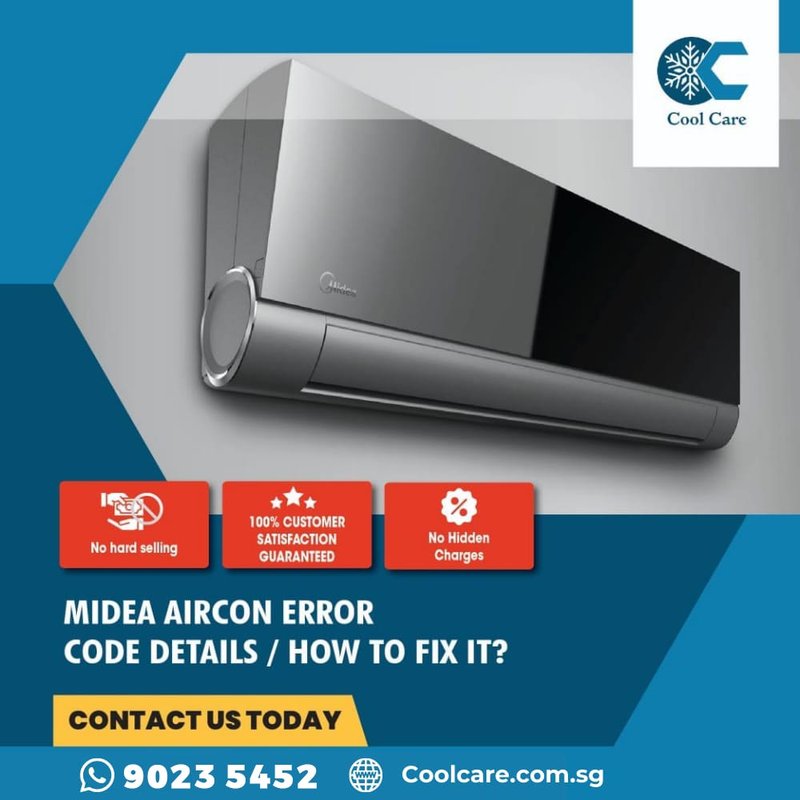
Here’s the deal: Error Code Oe on Midea air conditioners typically indicates a problem with the water drainage system, often due to a blocked drain pipe or an overfilled internal water tank. Just like when you don’t empty a full sink, the water has nowhere to go and eventually will spill over. The key to a smoothly running air conditioner is ensuring that water flows where it should—out of your home. Understanding how to preemptively tackle these issues can save you time, money, and a lot of sweat (literally).
Understanding Error Code Oe: What’s Going Wrong?
You might be wondering, “What causes this pesky Error Code Oe to appear?” Think of it this way: your air conditioner is like a sophisticated water removal system. It sucks moisture from the air inside your room and needs to get rid of that water somehow. If the drainage system fails, you have a problem. This error code is basically your AC saying, “Hey, something’s not right here!”
The most common cause of Error Code Oe is a blockage in the drainage system. A clogged drain pipe is like a backed-up sink that can’t empty its water fast enough. Over time, debris like dirt and dust can accumulate and cause a blockage, or if the unit is not correctly installed, the drain hose might kink or sag, causing poor drainage. Additionally, in humid environments, the internal water tank can fill up quickly and might not be emptied fast enough, leading to the error code.
So, what happens if you let this error persist? Not only does it mean your air conditioner won’t cool your space efficiently, but it could also lead to water leakage, which could damage your floors or walls. More importantly, continuing to run the air conditioner without addressing the issue could lead to more serious mechanical failures down the line.
Routine Maintenance: Keep Your AC Happy
A little maintenance goes a long way when it comes to preventing Error Code Oe. Think of maintaining your air conditioner like taking care of a car. Just as you wouldn’t drive your car without regular oil changes, your AC unit needs regular check-ups to keep running smoothly. Fortunately, you can handle most of these check-ups yourself, even if you’re not particularly handy.
Start by regularly inspecting and cleaning the drain hose to ensure there’s no debris blocking it. This is similar to making sure there’s no food stuck in your kitchen drain. Simply detach the hose and give it a good rinse with water. If it’s a bit more stubborn, a mild detergent can help dislodge any buildup. Ensuring that the hose is straight and has no kinks will also promote proper water flow.
Next, take a look at the internal water tank. If it’s filling up too quickly, keep an eye on it and empty it before it becomes a problem. For units with a permanent water drainage option, ensure it’s properly set up. This helps avoid the tank overfilling in the first place. Regularly clean the tank to prevent any mold or mildew from developing, which can also cause blockages.
Installation Matters: Set Up for Success
Believe it or not, how you install your air conditioner can make a world of difference in preventing this error code. Just like setting the foundation of a house, your AC needs a solid, well-thought-out installation to function properly. A poorly installed unit can lead to all sorts of problems, including drainage issues.
When setting up your Midea air conditioner, ensure it’s installed on a flat surface. This helps keep the internal water tank level, preventing unnecessary spills. Also, make sure the unit is positioned to allow proper airflow. A blocked air inlet can cause the system to work harder than necessary, leading to condensation problems and a filled-up water tank.
Additionally, consider where the drainage hose is routed. The hose should slope downward to allow water to drip out easily. Avoid any loops or kinks in the hose, much like you’d want a garden hose to stay straight to ensure water flows out smoothly. If you’re not sure about how your AC should be installed, don’t hesitate to seek professional help. Having an expert handle the installation can prevent headaches in the long run.
Temperature and Humidity Management: Keep It Cool
Finally, let’s talk about managing your environment. Just like dressing in layers to stay comfortable, managing your indoor temperature and humidity can keep your air conditioner from overworking itself. High humidity levels can cause your air conditioner to fill its tank faster because it needs to work extra hard to remove all that moisture from the air.
Consider using a dehumidifier in particularly humid environments. This can significantly alleviate the workload on your air conditioner and help prevent the tank from filling up too quickly. Additionally, setting your thermostat to a reasonable temperature can keep your unit from overworking. You wouldn’t leave your car running at full speed all the time, right? The same logic applies here. Aim for a comfortable room temperature that doesn’t require your unit to run non-stop.
As you can see, a little bit of foresight and some simple, regular maintenance can go a long way in preventing Error Code Oe from appearing on your Midea air conditioner. By ensuring proper water drainage, correct installation, and smart environmental management, you’re setting your unit up for a long, hassle-free life. Now you can chill out and enjoy the cool air, without the worry of unexpected errors!